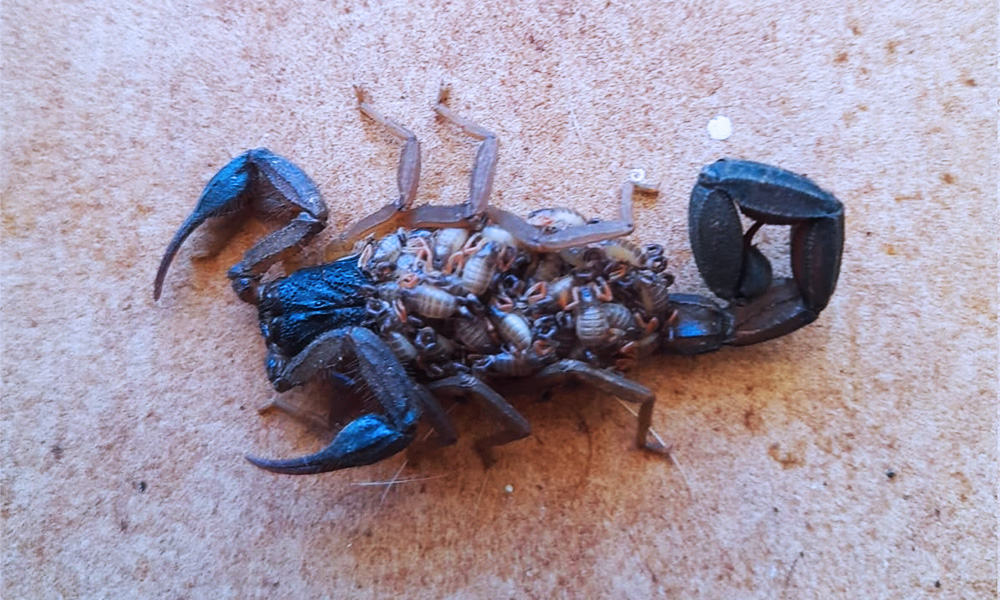The fauna of Costa Rica is one of the main reasons folks from all over the world come to visit or put down roots in this tiny paradise. They imagine toucans, sloths, and monkeys flying, snoozing, and swinging outside of their windows. As much as they quest for interactions with these charming creatures, they end up becoming preoccupied with their more frequent run-ins with less charismatic species.
These animals, for one reason or another, can’t help but produce a stink face in the vast majority of people. I’ve already covered a few of these. Spotted skunks are beautifully decorated members of the weasel family, but they smell bad. Stink face. Black vultures play a vital role in the ecology of the landscape, limiting the spread of disease and cycling nutrients, but they eat dead stuff. Stink face.
For most, scorpions are a card-carrying member of the stink face club. They have a lot of creepy legs. They have claws like a crab. They’ve got a tail tipped with the animal equivalent of a hypodermic needle that can inject you with a pain-inducing venom. Even worse, at certain times of the year, females are walking around covered in their offspring which looks like an absolute horror show (see accompanying photo from my kitchen floor). While it’s understandable that they can send a shiver down your spine, they are included among the interesting creatures that call Costa Rica home, and I’m determined to teach you a little bit about them.
Costa Rica is home to 14 different species of scorpion. One of the most common, and the star of today’s show, is the bark scorpion (Centruroides limbatus). The bark scorpion, like all species of scorpion as far as I know, is known as the alacrán in Spanish.
Bark scorpions are a polymorphic species, which means individuals come in a variety of colors. They’re usually some combination of yellow, tan, or blackish brown. They can grow quite large, reaching over four inches long.
Their range includes Honduras, Nicaragua, Costa Rica, and Panama though there seems to be some uncertainty as to whether they’re really in Honduras or not. In Costa Rica, they’re found throughout much of the country from sea level up to about 5,000 feet in elevation. They’re mostly nocturnal, crawling around the forest understory at night looking for prey. Their diet includes insects, spiders, centipedes, and other scorpions, including members of their own species who happen to be smaller than the one doing the eating. Prey is captured and held with the long pincers and stung with that iconic tail.
I’d be interested to learn more about the frequency of interactions with bark scorpions in other parts of the country, but I can tell you from experience that they are quite common along the coast in Guanacaste. They live in and around my house. I’ve seen them while checking camera traps in the forest. I’ve seen them while mowing the grass.
I once saw a clay-colored thrush beat one into submission and swallow it whole. The problem is when I see them in the house. Every member of my family and both of my dogs have been stung. My youngest son has a knack for getting little, tiny ones inside of his shirt somehow, which results in multiple stings and a lot of crying. If you haven’t yet had the misfortune of experiencing a sting for yourself, it can best be described as a very painful wasp sting. The only method we’ve found for relieving the pain is keeping ice on the site of the sting for a good long time.
Bark scorpions are much too small to trigger my camera traps, but I once recorded a series of videos of an ocelot napping in a tree cavity with a scorpion crawling around the outside of the tree. I wonder if it got stung.
About the Author
Vincent Losasso, founder of Guanacaste Wildlife Monitoring, is a biologist who works with camera traps throughout Costa Rica. Learn more about his projects on facebook or instagram. You can also email him at: vincent@guanacastewildlifemonitoring.com

